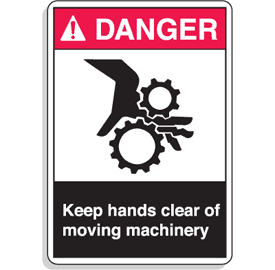 I find it incredibly sad when writing this blog to come across the same sort of problems, the same sort of injuries and the same sort of accidents occurring in the workplace with such tired regularity.
I find it incredibly sad when writing this blog to come across the same sort of problems, the same sort of injuries and the same sort of accidents occurring in the workplace with such tired regularity.
It is certainly true to say that the (fortunately) decreasing number of serious accidents in the workplace almost always fall into one of just a handful of categories.
One of these common categories involves accidents which occur when things go wrong, when routines have changed. Businesses and organisations can have superb health and safety policies, the equipment fitted with suitable guards, and training provided. Yet there is always a ‘but’, and this usually relates to when things veer off course, moving away from the predictable regularity of normal day to day business.
Hertfordshire Employee Suffers Debilitating Hand Injuries
The latest example of this is a case brought to our attention by the Health and Safety Executive (HSE) regarding a business in Hertfordshire who employed a man to use a machine which was used to cut sheets of lead into smaller sections. The man had been trained perfectly well, and the equipment was equipped with the relevant security features. As far as the normal day to day use of the machine is concerned everything seemed fine. All boxes were ticked.
All boxes that is except for one: when things go wrong.
Let’s face it, machines go wrong, blades break, parts of the machinery get clogged up, and bits need unclogging and sorting out. This really is part of the day to day running and use of machines, because there isn’t a single machine built yet that hasn’t needed some maintenance work at some point, and hasn’t gone wrong in some way during its life.
In February of 2012 the employee was cutting the sheets of lead when some of the lead became stuck, preventing any further sheets from being fed into the machine where they could be cut by a very sharp circular saw. The employee had been trained in the usage of the machine, but not in what to do when it got clogged up. There was also no supervisor available to provide advice.
They say a little knowledge is a dangerous thing, and in this case it certainly was. The employee remembered being told that the blade was retracted when not in use. Believing the blade to be retracted at this point the employee reached in to dislodge the lead, but unfortunately his hand came into contact with the saw, which was still moving.
He completely severed one finger and cut through the nerves of another. The injuries required four months of healing, and of course have left him with permanent difficulties. The company, Jamestown Industries Ltd, was fined £4,000 and ordered to pay costs of £8,600.
The Importance Of Comprehensive Health And Safety Checks
This case yet again underlines the need for health and safety checks and policies to cover not just the expected risks during everyday use of and operation of machinery, but also those risks likely when things go wrong and don’t go according to plan.
For expert advice on making sure that your health and safety policies are including these all-too-often overlooked risks call one of our professional health and safety advisors today on 0800 1488 677 who will be happy to help.

A chartered (fellow) safety and risk management practitioner with 20+ years of experience. David provides a healthy dose of how-to articles, advice and guidance to make compliance easier for construction professionals, Architects and the built environment. Get social with David on Twitter and Linkedin.



